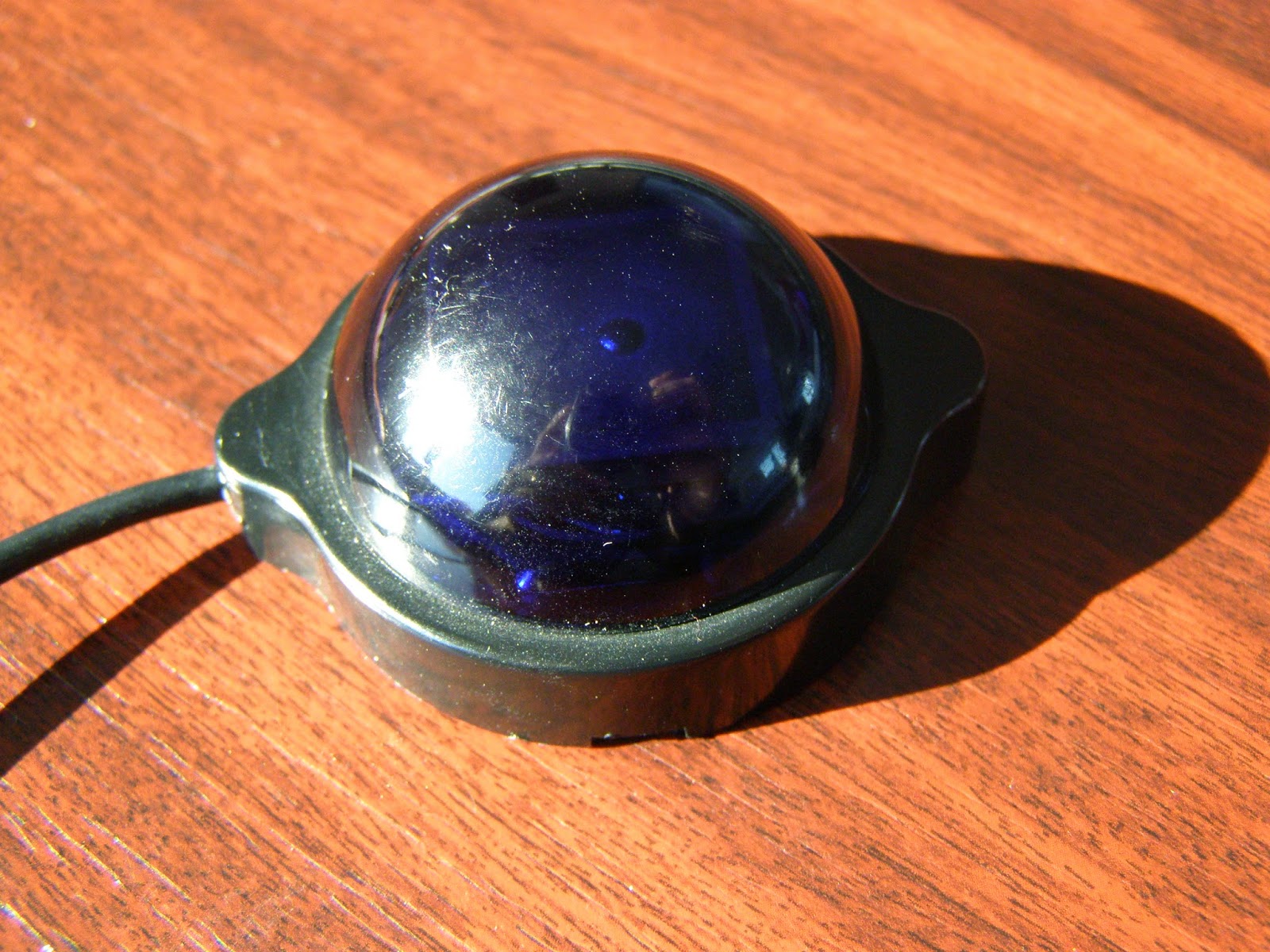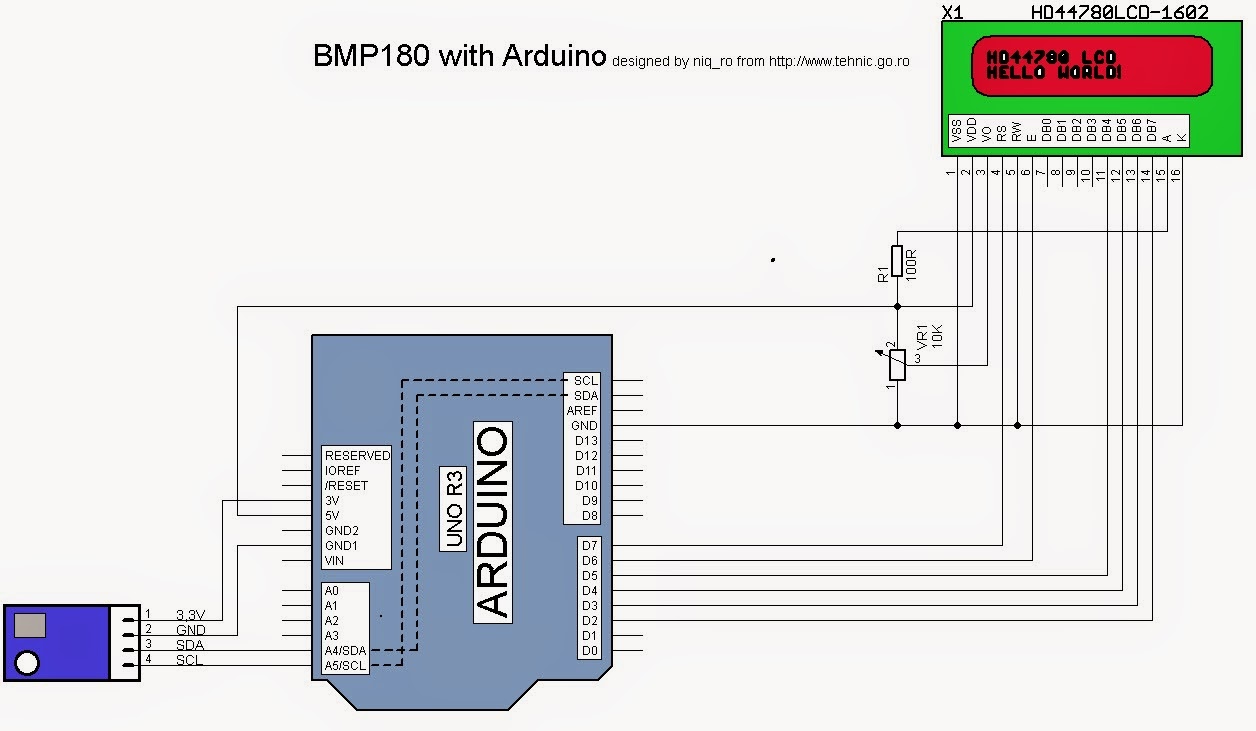For control the display I try library recomanded by buyer but not work at me. I search on net and I found article named A 2.4″ TFT TOUCHSCREEN SHIELD FOR ARDUINO.
Smoke and Wires change TFT libray from Adafruit for works with this display. The new library is SWTFT. You must have alse Touch Screen library and Adafruit GFX library.
First, I tryed examples from SWTFT library and I made a movie:
and few pics:
For understund the example from SWTFT library, I change the sketch and my results are:
Finally, I try this:
and my sketch is:
// Original code provided by Smoke And Wires
// http://www.smokeandwires.co.nz
// This code has been taken from the Adafruit TFT Library and modified
// by us for use with our TFT Shields / Modules
// For original code / licensing please refer to
// https://github.com/adafruit/TFTLCD-Library
// adapted sketch by niq_ro from http://arduinotehniq.blogspot.com/
// ver. 1m5 - 13.11.2014, Craiova - Romania
#include <Adafruit_GFX.h> // Core graphics library
#include "SWTFT.h" // Hardware-specific library
// The control pins for the LCD can be assigned to any digital or
// analog pins...but we'll use the analog pins as this allows us to
// double up the pins with the touch screen (see the TFT paint example).
// #define LCD_CS A3 // Chip Select goes to Analog 3
// #define LCD_CD A2 // Command/Data goes to Analog 2
// #define LCD_WR A1 // LCD Write goes to Analog 1
// #define LCD_RD A0 // LCD Read goes to Analog 0
// #define LCD_RESET A4 // Can alternately just connect to Arduino's reset pin
// When using the BREAKOUT BOARD only, use these 8 data lines to the LCD:
// For the Arduino Uno, Duemilanove, Diecimila, etc.:
// D0 connects to digital pin 8 (Notice these are
// D1 connects to digital pin 9 NOT in order!)
// D2 connects to digital pin 2
// D3 connects to digital pin 3
// D4 connects to digital pin 4
// D5 connects to digital pin 5
// D6 connects to digital pin 6
// D7 connects to digital pin 7
// For the Arduino Mega, use digital pins 22 through 29
// (on the 2-row header at the end of the board).
#include <Adafruit_GFX.h> // Core graphics library
#include <SWTFT.h> // Hardware-specific library
#include <TouchScreen.h>
#define YP A1 // must be an analog pin, use "An" notation!
#define XM A2 // must be an analog pin, use "An" notation!
#define YM 7 // can be a digital pin
#define XP 6 // can be a digital pin
#define TS_MINX 150
#define TS_MINY 120
#define TS_MAXX 920
#define TS_MAXY 940
// For better pressure precision, we need to know the resistance
// between X+ and X- Use any multimeter to read it
// For the one we're using, its 300 ohms across the X plate
TouchScreen ts = TouchScreen(XP, YP, XM, YM, 300);
// Assign human-readable names to some common 16-bit color values:
#define BLACK 0x0000
#define BLUE 0x001F
#define RED 0xF800
#define GREEN 0x07E0
#define CYAN 0x07FF
#define MAGENTA 0xF81F
#define YELLOW 0xFFE0
#define WHITE 0xFFFF
//#define ROZ 0xFD20
#define ROZ 0xFBE0
#define GRI 0xBDF7
// http://stackoverflow.com/questions/13720937/c-defined-16bit-high-color
// http://wiibrew.org/wiki/U16_colors
SWTFT tft;
#define BOXSIZE 40
#define PENRADIUS 3
int oldcolor, currentcolor;
int ics;
void setup(void) {
Serial.begin(9600);
Serial.println(F("Paint!"));
tft.reset();
uint16_t identifier = tft.readID();
Serial.print(F("LCD driver chip: "));
Serial.println(identifier, HEX);
tft.begin(identifier);
tft.fillScreen(BLACK);
tft.fillRect(0, 0, 320, 240, BLACK);
tft.setRotation(3);
tft.setCursor(30, 100);
tft.setTextColor(RED); tft.setTextSize(3);
tft.println("LCD driver chip: ");
tft.setCursor(100, 150);
tft.setTextColor(BLUE);
tft.println(identifier, HEX);
delay(2000);
tft.fillRect(0, 0, 320, 240, BLACK);
tft.setRotation(0);
tft.fillRect(0, 0, BOXSIZE, BOXSIZE, RED);
tft.fillRect(0, BOXSIZE, BOXSIZE, BOXSIZE, YELLOW);
tft.fillRect(0, BOXSIZE*2, BOXSIZE, BOXSIZE, GREEN);
tft.fillRect(0, BOXSIZE*3, BOXSIZE, BOXSIZE, CYAN);
tft.fillRect(0, BOXSIZE*4, BOXSIZE, BOXSIZE, BLUE);
tft.fillRect(0, BOXSIZE*5, BOXSIZE, BOXSIZE, MAGENTA);
tft.fillRect(0, BOXSIZE*6, BOXSIZE, BOXSIZE, GRI);
tft.fillRect(0, BOXSIZE*7, BOXSIZE, BOXSIZE, ROZ);
//tft.fillRect(BOXSIZE, BOXSIZE, BOXSIZE, BOXSIZE, WHITE);
tft.drawRect(0, 0, BOXSIZE, BOXSIZE, WHITE);
currentcolor = RED;
cifre (WHITE);
pinMode(13, OUTPUT);
}
#define MINPRESSURE 10
#define MAXPRESSURE 1000
void loop()
{
digitalWrite(13, HIGH);
// Recently Point was renamed TSPoint in the TouchScreen library
// If you are using an older version of the library, use the
// commented definition instead.
// Point p = ts.getPoint();
TSPoint p = ts.getPoint();
digitalWrite(13, LOW);
// if sharing pins, you'll need to fix the directions of the touchscreen pins
//pinMode(XP, OUTPUT);
pinMode(XM, OUTPUT);
pinMode(YP, OUTPUT);
//pinMode(YM, OUTPUT);
// we have some minimum pressure we consider 'valid'
// pressure of 0 means no pressing!
if (p.z > MINPRESSURE && p.z < MAXPRESSURE) {
/*
Serial.print("X = "); Serial.print(p.x);
Serial.print("\tY = "); Serial.print(p.y);
Serial.print("\tPressure = "); Serial.println(p.z);
*/
if (p.y < (TS_MINY-5)) stergere();
// scale from 0->1023 to tft.width
p.x = tft.width()-(map(p.x, TS_MINX, TS_MAXX, tft.width(), 0));
p.y = tft.height()-(map(p.y, TS_MINY, TS_MAXY, tft.height(), 0));
/*
Serial.print("("); Serial.print(p.x);
Serial.print(", "); Serial.print(p.y);
Serial.println(")");
*/
if (p.x < BOXSIZE) {
oldcolor = currentcolor;
if (p.y < BOXSIZE) {
currentcolor = RED;
tft.drawRect(0, 0, BOXSIZE, BOXSIZE, WHITE);
// text (currentcolor);
} else if (p.y < BOXSIZE*2) {
currentcolor = YELLOW;
tft.drawRect(0, BOXSIZE, BOXSIZE, BOXSIZE, WHITE);
// text (currentcolor);
} else if (p.y < BOXSIZE*3) {
currentcolor = GREEN;
tft.drawRect(0, BOXSIZE*2, BOXSIZE, BOXSIZE, WHITE);
// text (currentcolor);
} else if (p.y < BOXSIZE*4) {
currentcolor = CYAN;
tft.drawRect(0, BOXSIZE*3, BOXSIZE, BOXSIZE, WHITE);
// text (currentcolor);
} else if (p.y < BOXSIZE*5) {
currentcolor = BLUE;
tft.drawRect(0, BOXSIZE*4, BOXSIZE, BOXSIZE, WHITE);
// text (currentcolor);
} else if (p.y < BOXSIZE*6) {
currentcolor = MAGENTA;
tft.drawRect(0,BOXSIZE*5, BOXSIZE, BOXSIZE, WHITE);
// text (currentcolor);
} else if (p.y < BOXSIZE*7) {
currentcolor = GRI;
tft.drawRect(0,BOXSIZE*6, BOXSIZE, BOXSIZE, WHITE);
// text (currentcolor);
} else if (p.y < BOXSIZE*8) {
currentcolor = ROZ;
tft.drawRect(0,BOXSIZE*7, BOXSIZE, BOXSIZE, WHITE);
stergere();
}
text (currentcolor);
//cifre (currentcolor);
if (oldcolor != currentcolor) {
if (oldcolor == RED) tft.fillRect(0, 0, BOXSIZE, BOXSIZE, RED);
if (oldcolor == YELLOW) tft.fillRect(0, BOXSIZE, BOXSIZE, BOXSIZE, YELLOW);
if (oldcolor == GREEN) tft.fillRect(0, BOXSIZE*2, BOXSIZE, BOXSIZE, GREEN);
if (oldcolor == CYAN) tft.fillRect(0, BOXSIZE*3, BOXSIZE, BOXSIZE, CYAN);
if (oldcolor == BLUE) tft.fillRect(0, BOXSIZE*4, BOXSIZE, BOXSIZE, BLUE);
if (oldcolor == MAGENTA) tft.fillRect(0, BOXSIZE*5, BOXSIZE, BOXSIZE, MAGENTA);
if (oldcolor == GRI) tft.fillRect(0, BOXSIZE*6, BOXSIZE, BOXSIZE, GRI);
if (oldcolor == ROZ) tft.fillRect(0, BOXSIZE*7, BOXSIZE, BOXSIZE, ROZ);
cifre (currentcolor);
}
}
// if (((p.y-PENRADIUS) > BOXSIZE) && ((p.y+PENRADIUS) < tft.height())) {
/*
if (((p.y-PENRADIUS) > 5) && ((p.y+PENRADIUS) < tft.height())) {
tft.fillCircle(p.x, p.y, PENRADIUS, currentcolor);
}
*/
if (((p.x-PENRADIUS) > BOXSIZE) && ((p.x+PENRADIUS) < tft.width())) {
tft.fillCircle(p.x, p.y, PENRADIUS, currentcolor);
}
}
}
void text (int culoare)
{
tft.setRotation(3);
tft.setCursor(70, 80);
tft.setTextColor(culoare); tft.setTextSize(5);
/* tft.println("niq_ro");
tft.setCursor(12, 130); tft.setTextSize(3);
tft.println("www.tehnic.go.ro");
tft.setCursor(20, 165); tft.setTextSize(2);
tft.println("nicuflorica.blogspot.ro");
*/
tft.setCursor(5, 220); tft.setTextSize(2);
tft.println("arduinotehniq.blogspot.com");
tft.setRotation(0);
}
void cifre (int culoare)
{
// number for "buttons"
tft.setRotation(3);
tft.setTextColor(culoare);
tft.setTextSize(3);
tft.drawLine(0, 0, 40, 40, culoare);
tft.drawLine(0, 40, 40, 0, culoare);
// tft.setCursor(15, 10);
// tft.println("1");
tft.setCursor(55, 10);
tft.println("1");
tft.setCursor(95, 10);
tft.println("2");
tft.setCursor(135, 10);
tft.println("3");
tft.setCursor(175, 10);
tft.println("4");
tft.setCursor(215, 10);
tft.println("5");
tft.setCursor(255, 10);
tft.println("6");
tft.setCursor(295, 10);
tft.println("7");
tft.setRotation(0);
}
void stergere ()
{
Serial.println("erase");
// press the bottom of the screen to erase
// tft.fillRect(0, BOXSIZE, tft.width(), tft.height()-BOXSIZE, BLACK);
tft.fillRect(0, 0, 240, 320, BLACK);
tft.setRotation(0);
tft.fillRect(0, 0, BOXSIZE, BOXSIZE, RED);
tft.fillRect(0, BOXSIZE, BOXSIZE, BOXSIZE, YELLOW);
tft.fillRect(0, BOXSIZE*2, BOXSIZE, BOXSIZE, GREEN);
tft.fillRect(0, BOXSIZE*3, BOXSIZE, BOXSIZE, CYAN);
tft.fillRect(0, BOXSIZE*4, BOXSIZE, BOXSIZE, BLUE);
tft.fillRect(0, BOXSIZE*5, BOXSIZE, BOXSIZE, MAGENTA);
tft.fillRect(0, BOXSIZE*6, BOXSIZE, BOXSIZE, GRI);
tft.fillRect(0, BOXSIZE*7, BOXSIZE, BOXSIZE, ROZ);
//tft.fillRect(BOXSIZE, BOXSIZE, BOXSIZE, BOXSIZE, WHITE);
tft.drawRect(0, 0, BOXSIZE, BOXSIZE, WHITE);
currentcolor = RED;
cifre (WHITE);
}





























